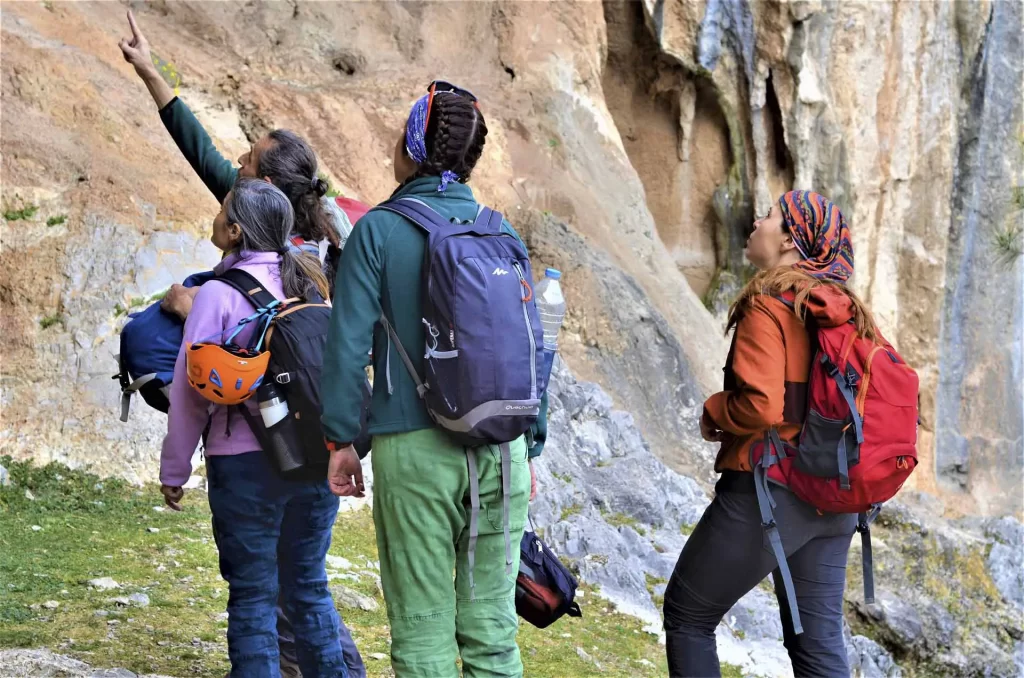Hiking Rules and Etiquette
Hiking Rules and Etiquette are unwritten rules that must be followed in the mountains and in nature. Hiking is a popular outdoor activity enjoyed by many people around the world. It’s a great way to get exercise, experience nature, and explore new places. However, with the increasing number of people hitting the trails, it’s important to be aware of certain rules and etiquette to ensure a safe and pleasant experience for all.
By following these basic hiking rules and etiquette, we can all do our part to help preserve and enjoy the natural beauty of our hiking trails for generations to come.
Daily walking activities in the natural environment, which can be attended by people of all ages with favorable health conditions, individually or as a team, are called hiking. Hiking is a very enjoyable, fun and productive activity option for anyone who wants to spend time with nature and do sports. However, it is not an entertainment or hobby tour, it is a sport branch. Like every branch of sports, it requires a discipline and solidarity within itself. Therefore, there are certain hiking rules that must be followed.
You may encounter different problems or bumps in nature walks. For this reason, it is of great importance for each person participating in the nature walk to act within the framework of the said discipline and solidarity. Hiking’s unwritten rules, which are expected to be followed by everyone, are also there to create this atmosphere.
Hiking is a great way to enjoy the outdoors, but it’s important to follow certain rules and etiquette to ensure a safe and enjoyable experience for everyone. Here are some basic hiking rules and etiquette to keep in mind;
Stay on the trail: Stick to the marked trail to avoid damaging the surrounding environment and to prevent getting lost.
Staying on the trail is an important rule to follow while hiking. It helps preserve the environment by preventing damage to delicate ecosystems, such as plant life and soil erosion. Additionally, it helps prevent hikers from getting lost, which can be dangerous in unfamiliar terrain. In some areas, wandering off the trail can also lead to damage to culturally significant sites or even potential hazards like unstable rock formations or cliffs. So it’s important to stick to the marked trail, even if it may seem tempting to explore off the beaten path.
Leave no trace: Pack out all of your trash and avoid disturbing plants and animals.
Leaving no trace is an important rule in hiking, which means leaving the trail and surrounding environment just as you found it, or even better. This includes packing out all trash, avoiding disturbing plants and animals, and not carving on trees or rocks. The idea is to minimize your impact on the environment and preserve the natural beauty for future hikers to enjoy. Some tips to leave no trace include carrying a small trash bag to collect all your trash and litter, packing out all food scraps, and avoiding building campfires in non-designated areas. Additionally, hikers are encouraged to bury human waste at least 200 feet from water sources and to avoid washing dishes or bathing in streams or lakes. By following the “leave no trace” rule, hikers can help protect the natural environment and ensure that it remains beautiful and healthy for future generations to enjoy.
Respect wildlife: Observe wildlife from a safe distance and don’t feed or approach them.
Respecting wildlife is an important part of hiking etiquette. It’s important to remember that we are visitors in their natural habitat and we should avoid disturbing them. Observing wildlife from a safe distance can also help prevent dangerous encounters. Feeding or approaching animals can also be harmful to their health and safety. It’s important to remember that our actions can have a significant impact on the environment and the animals that call it home.
Yield to others: Uphill hikers have the right of way and should be given plenty of space to pass.
Hikers should yield to equestrians and mountain bikers, who may need extra space to maneuver. It’s important to be aware of your surroundings and communicate with others on the trail to avoid accidents or conflicts. When encountering other hikers or trail users, step aside and let them pass safely.
Keep noise levels down: Loud noises can disturb the natural environment and other hikers.
Keeping noise levels down is an important hiking etiquette rule. Shouting, playing loud music, or making excessive noise can be disruptive to other hikers and disturb the natural environment, including wildlife. It’s important to be mindful of your surroundings and try to maintain a peaceful and quiet atmosphere as much as possible. This also means refraining from using cell phones or other electronic devices that can make noise and distract from the hiking experience. If you’re hiking with a group, try to keep conversation at a reasonable volume so as not to disturb others on the trail.
Keep dogs on a leash: Dogs should be kept on a leash to prevent them from disturbing wildlife or other hikers.
Keeping dogs on a leash is an important hiking rule and etiquette to follow. Not only does it prevent dogs from disturbing wildlife, but it also ensures the safety of other hikers. Additionally, some hiking trails and parks have specific rules requiring dogs to be on a leash at all times.
Respect private property: Stick to designated public trails and avoid trespassing on private property.
It’s important to respect private property and only hike on designated public trails to avoid any legal issues and to protect the environment and wildlife. Hikers should always research the area they plan to hike in advance to ensure they are aware of any restrictions or regulations.
Be prepared: Bring enough food, water, and clothing to be self-sufficient in case of emergencies.
- Know your limits: Choose a trail that matches your physical fitness and skill level. Don’t attempt trails that are beyond your abilities.
- Tell someone your plans: Let a friend or family member know where you are going and when you expect to return.
- Check the weather: Check the forecast and avoid hiking in dangerous weather conditions.
- Carry a map and compass: Always carry a map and compass, and know how to use them in case you get lost.
- Stay hydrated: Bring enough water to stay hydrated throughout your hike. Drinking water from streams or lakes can be dangerous without proper treatment.
- Take breaks: Take frequent breaks to rest and enjoy the scenery.
- Leave natural features as you found them: Don’t pick flowers, disturb rocks, or carve into trees.
- Know the rules and regulations: Before heading out on a trail, familiarize yourself with any rules or regulations in place for that area.
Know your limits: Choose a hike that matches your abilities and experience level.
It’s important to know your physical limits and choose a hike that matches your abilities and experience level. If you’re a beginner, start with easy trails and gradually work your way up to more difficult ones. Don’t take on a hike that is beyond your ability, as this can be dangerous for yourself and others in your group. Remember to take frequent breaks, stay hydrated, and listen to your body. If you start feeling exhausted or have any other health concerns, turn back and end your hike early.
Be courteous: Greet other hikers and be respectful of their experience and needs.
It’s always good to greet other hikers with a friendly “hello” or “good morning.” If you’re hiking in a group, make sure to stay to the right side of the trail and allow other hikers to pass on the left. If you need to take a break, step off the trail to allow others to pass by. And if you encounter someone who is struggling on the trail, offer to help if you can. It’s important to be respectful of other hikers’ needs and experiences, and to make the trail a friendly and welcoming place for everyone.
The Kathmandu Declaration on Mountain Activities (UIAA) Our article may also interest you.





